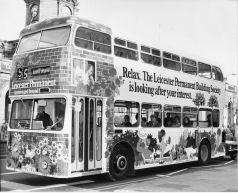To close the window press, Alt-F4
|
Memories
of
|
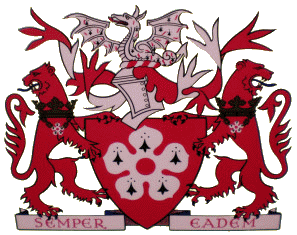
Page 1
Photos
1
&
2
Abbey
Park
Road
depot
.
.
"running
in",
an
evening
shot
at
the
end
of
the
evening
peak.
The
majority
of
the
fleet
'ran
in'
to
depot,
to
wash,
refuel,
and
park
up
for
the
night.
The
remainder
would
provide
the
evening
service
until
late
hours,
working
the
last
buses
from
the
city
centre
at
11pm,
and
most
would
then
'run
in'
directly
from
their
respective
termini,
usually
off-service
or
'run-light',
the
official
term.
The
term,
'running
in'
was
yet
another
hangover
from
the
days
of
the
trams,
when
trams
'ran
in
to
shed'.
Drivers
queued
to
be
re-fuelled
by
garage
staff,
and
then
taking
the
bus
through
the
buswash,
parking
up
was
done
by
the
drivers
themselves
as
their
last
duty
of
their
shift,
just
as
their
conductors
cashed
up
and
'paid
in'
in
the
cash
office.
Back
in
the
days
of
the
trams,
an
old-fashioned
brass
key
embossed
with
your
uniform
number
used
to
hang
on
these
simple
hooks.
The
key
itself
was
slightly
ornate
and
about
as
long
as
a
middle
finger
and
would
be
placed
into
the
depot
time
clock
to
sign
crews
on
and
off,
the
raised
number
on
the
key
leaving
its
imprint
on
the
timecard
as
you
turned
it.
Also,
a
bell
inside
the
timeclock
rang
as
you
turned
the
key
fully,
a
sign
to
the
inspector
behind
the
desk
that
you
had
actually
signed
in
and
'punched
the
card'
correctly.
Hence
why
the
hook
was
still
called
a
'key'
long
after
the
actual
keys
and
timeclock
had
been
done
away
with.
Photo
3 The
view
straight
through
the
fuel
pumps
and
bus
wash,
into
the
darkness
of
the
main
garage.
The
offices
on
the
immediate
left
were
the
ground-floor
cash
office,
where
conductors
and
one-man-drivers
paid
in,
and
above
that
was
the
Training
School
for
both
drivers
and
conductors,
wherin
was
obtained
the
finest
PSV
driver
training
in
the
land,
under
the
guidance
of
the
fabled
Ken
Brown,
senior
training
inspector
and
driving
examiner.
We
see
a
row
of
five
PD3s
at
the
back,
a
couple
of
Atlanteans,
two
Scania
saloons,
and
the
PD2
Training
Bus,
just
hiding
in
the
foreground
round
the
corner
of
the
folding
garage
doors.
The
date
on
the
large
stone
plaque
over
the
main
garage
entrance
said
1933.
There
was
a
similar
door
and
impressive
matching
pediment
just
off
camera
to
the
right,
dated
1931,
I
believe,
the
other
half
of
the
main
depot
and
the
tram
bays
being
built
first.
All
gone
now,
of
course,
recently
demolished
to
make
way
for
a
development
of
flats.
The
site
is
totally
flattened
and
derelict,
and
at
the
time
of
writing,
not
a
new
stone
has
been
laid.
What
a
waste
and
great
example
of
municipal
crass
incompetence.
Photo
5 The
'new'
Operating
Centre
in
Rutland
Street,
opened
just
a
few
months
after
I
joined,
in
the
spring
of
1969,
replacing
the
ancient
tramsheds
and
offices
in
Humberstone
Gate.
All
the
main
offices
were
here.
Enquiries,
Lost
Property,
Duty
Office,
Camera
Control
Centre
were
on
the
ground
floor,
with
Cash
Paying-In
for
crews
and
other
administritive
offices
on
the
first
floor,
a
staff
canteen
on
the
second,
with
the
top
floor
housing
the
most
wonderful
Transport
Club
anyone
could
wish
for!
Two
bars,
a
dance
hall
with
sliding
screens,
a
fully
equipped
stage,
all
fitted
with
disco
lights,
sound
system,
the
full
works.
All
gone,
sacrificed
to
market
forces
when
the
bus
industry
was
effectively
sold
off
and
the
ratepayer's
property
all
but
given
away
to
the
highest
bidders
in
1986.
Nearly
100
years
of
expertise,
innovation
and
dedication,
thrown
to
the
wind
on
the
altar
of
so-called
private
enterprise.
I
wonder
what
the
people
of
Leicester
think
to
their
bus
service
now.
About
the
same
as
the
good
burghers
of
Hull,
where
I
live
now.
Which
is
not
a
lot.
Young
folks
may
find
it
hard
to
credit
now,
but
up
until
at
least
the
1970s,
Leicester
was
one
of
many
cities
that
were
proud
of
their
municipal
bus
service.
Maintenance,
training,
operations
and
general
attitude
within
municipal
bus
operators
was,
by
and
large,
second
to
none,
and
definitely
something
ratepayers
could
be
proud
to
say,
we
helped
pay
for
all
that.
Not
any
more.
Can
anyone
show
me
a
city
anywhere
now
in
the
kingdom
where
its
citizens
are
actually
proud
of
their
bus
service.
I
don't
think
so. The
links
are
to
the
city
centre
map
of
camera
locations,
with
guide,
and
the
instructions
to
drivers
on
how
to
operate
the
Pye
radio
system.
Yes,
we
were
all
given
a
pink
card
.
.
.
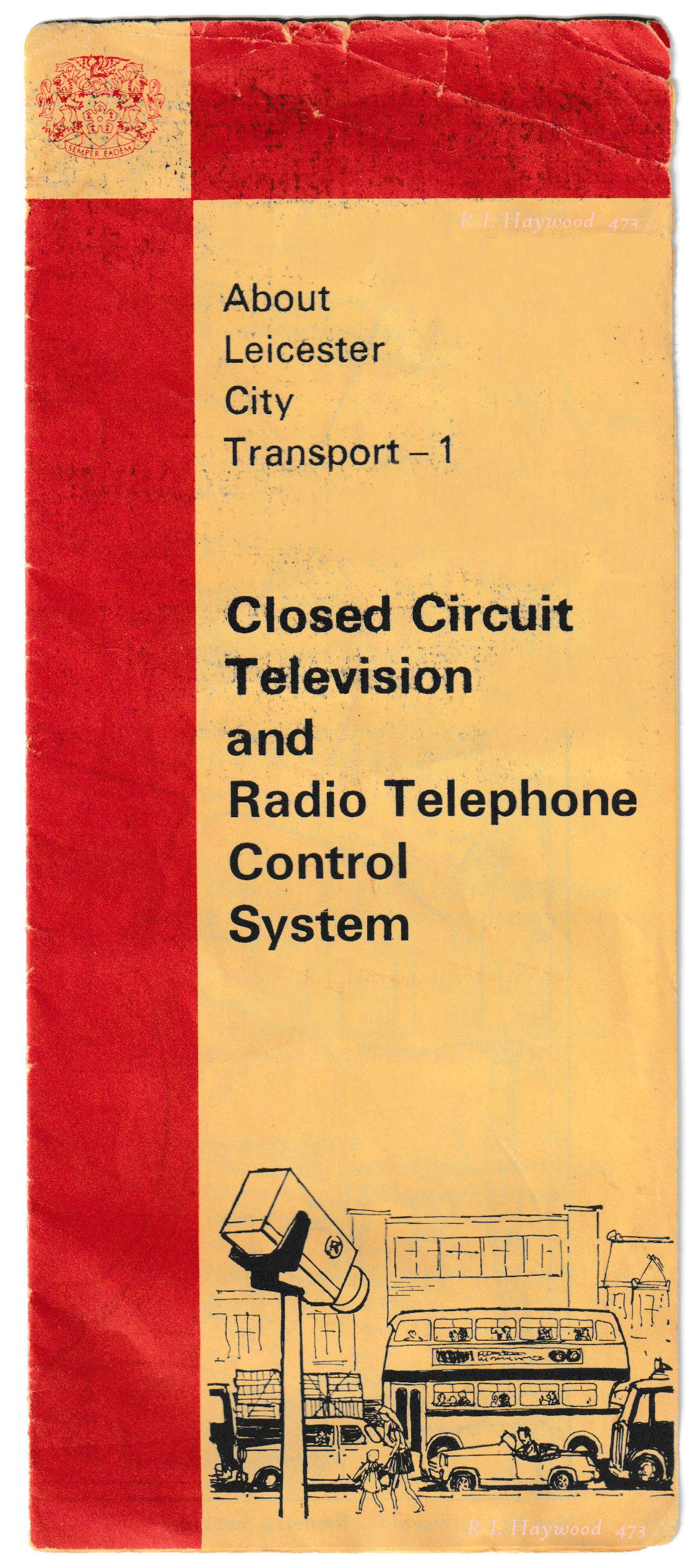
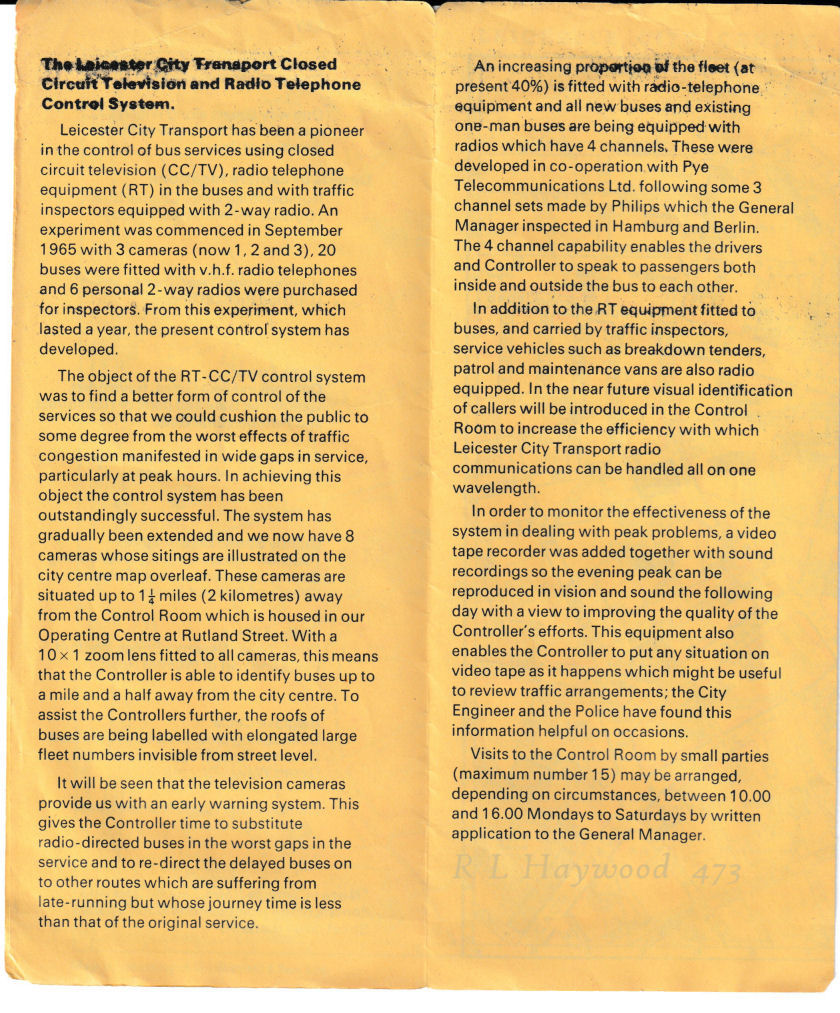
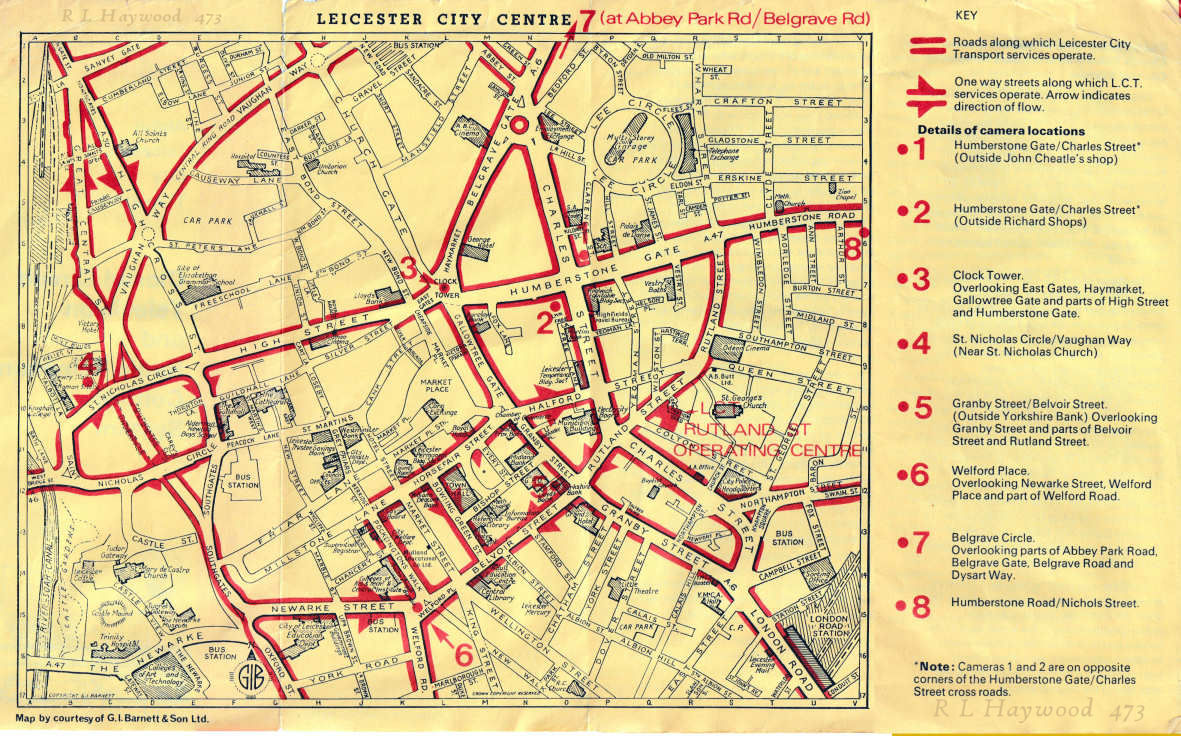
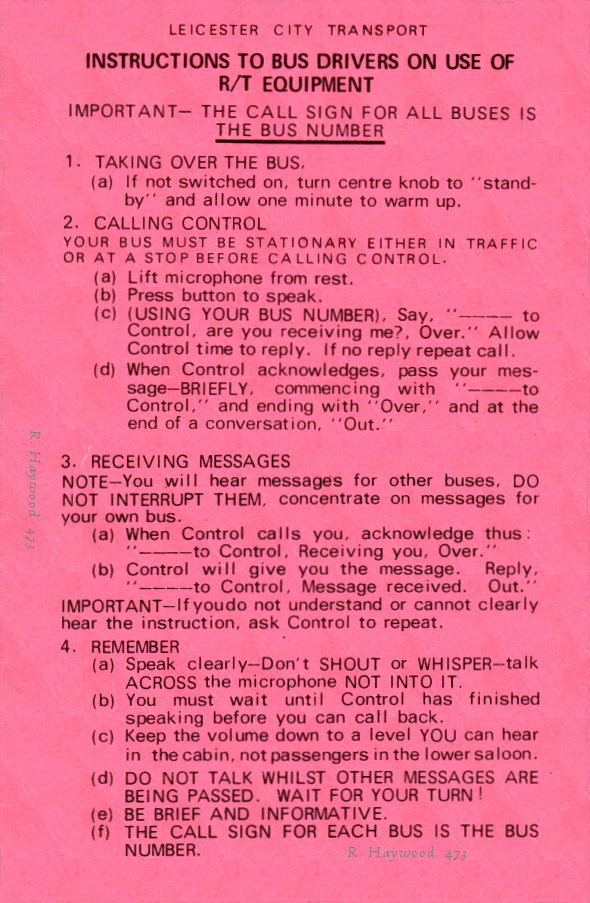
Photo
7 The
view
from
the
cab
of
a
PD3A.
A
wet
day
in
Charles
Street,
not
long
after
the
overhead
walkway
was
completed
into
the
then
newly-built
Haymarket
Centre.
The
bus
in
front,
No75,
is
another
PD3A,
on
the
88
Eyres
Monsell
barrier.
Across
the
road
outside
C&A's
are
a
couple
of
unidentified
PD3As.
The
one
in
front
is
on
a
57,
and
likely
to
be
an
85-95
type,
and
behind
that
what
looks
to
be
a
256-type.
PD3s
were
king!!
Photo
9 No.168,
a
tin-fronted
PD3/1,
"dogging"
me
down
Uppingham
Road
on
its
way
back
from
East
Park
Road,
and
in
the
pouring
rain,
at
about
40mph!
(No,
it
didn't
mean
the
same
thing
then!),
To
get
the
photo,
I
was
balanced
leaning
against
the
pole,
legs
bent
like
springs,
desperately
trying
not
to
fall
off
as
I
steadied
the
camera
for
this.
We
had
to
get
a
move
on
-
we
were
only
allowed
24
minutes
for
the
whole
trip
around
'The
Park'.
That
was
route
33
via
London
Road,
Evington
Road,
East
Park
Road
and
St
Barnabas
Road,
then
straight
back
to
Humberstone
Gate
down
Uppingham
Road.
A
total
of
24
bus
stops,
and
12
sets
of
traffic
lights,
all
in
24
mins,
but
it
could
be
done
-
first
thing
in
a
morning
when
there
was
no
one
about.
And
folks
wondered
why
we
were
in
such
a
rush
and
barely
let
the
wheels
stop
rolling
to
pick
up
and
set
down.
Some
conductors
were
so
slick
and
swift
on
the
bell
that
the
last
passenger
boarding
had
to
look
sharp.
When
the
bell
clanged
twice
for
go,
we
went
and
with
a
purpose.
These
older
PD3s
were
throaty
beasts,
and
were
usually
quite
pleasant
to
drive,
if
you
got
a
lightly-steered
one
with
a
reasonable
clutch.
This
one,
168,
wasn't
so
bad,
but
I
recall
161
would
break
a
strong
man's
heart,
and
166
would
do
well
over
50
mph
-
it
used
to
go
like
a
rocket,
and
leave
a
smoke
trail
behind
to
match!
I've
gone
round
The
Park
on
a
33
very
early
in
the
morning,
before
7am,
and
we
have
done
it
inside
the
24
minutes,
and
recall
very
well
doing
it
in
166.
Catching
the
lights
on
green
and
racing
down
the
slope
from
the
Evington
Cinema
at
40mph
plus
when
there
was
no
one
about
was
great
fun
at
something
like
6.30
in
the
morning.
It
was
a
bit
of
a
bind
having
to
stop
at
the
park,
Gwendolen
Rd,
to
punch
the
clock
when
you'd
got
a
good
head
of
steam
up,
but
it
tested
the
brakes.
I
considered
it
as
performing
a
public
service;
I
bet
we
woke
a
few
folks
up
before
their
alarm
went
off.
Photo
11 No.174,
yet
another
PD3/1
with
a
tin-front,
dating
from
1962,
and
still
only
10
years
old
when
I
first
drove
her.
These
were
very
smart
buses
in
their
day,
and
one
of
the
first
on
LCT
to
have
illuminated
advert
panels.
But
the
older
they
got,
the
heavier
the
steering
and
clutch
became.
Edinburgh
Corporation
also
had
a
good
fleet
of
this
type,
amongst
other
operators
like
Sheffield,
Blackpool
and
Bournemouth,
but
I
always
liked
the
description
of
the
Edinburgh
versions
by
a
Scottish
passenger
who
described
them
as,
'nine-and-a-half
tons
of
shivering
tin.'
Spot
on!
My
memory
exactly,
that's
about
right.
Everything
sounded
as
if
it
were
coming
loose.
Even
the
pedals
in
the
cab
used
to
wobble
on
tickover,
particularly
the
throttle
pedal,
which
flopped
about
all
over
the
place
and
it
took
some
doing
to
keep
a
steady,
even
pressure
with
the
right
foot,
giving
a
good
feeling
that
the
bus
was
running
on
kangaroo
juice
until
you
got
used
to
it.
As
you
got
more
confident,
you
realised
the
only
realistic
way
to
use
the
throttle
pedal
was
full
on.
Flat
to
the
floor
and
make
it
go.
Made
the
clutch
smell
a
bit
at
times,
but
there
you
are.
The
throttle
pedal
was
also
the
engine
stop.
One
reached
down
and
pulled
the
pedal
right
back
to
cut
the
engine.
Or
if
you
were
clever,
you
could
lift
it
back
with
the
toe
of
your
boot.
That
ruined
the
toecap
of
your
new
boots,
though.
Great
fun
for
frightening
the
passengers
though.
If
you
were
turned
around
in
your
seat,
and
chatting
with
some
young
lad
through
the
slide
window
as
he
kneeled
on
the
front
seat
with
his
mum
and
dad,
you
could
pull
the
pedal
back
as
you
were
talking,
and
the
engine
would
obligingly
cut
out.
You
would
feign
a
look
of
total
surprise,
and
say,
"Oh
dear",
and
ask
him
if
he
knew
how
you
could
get
it
going
again.
From
about
5
yrs
onwards,
most
did,
and
would
point
to
the
switch
box
to
your
right.
You'd
look
surprised,
as
the
boy
seemed
to
know,
and
when
you
pressed
the
button
and
the
engine
started,
the
look
of
delight
on
a
lad's
face
was
to
behold.
The
look
of
relief
on
their
parents'
face
was
pretty
good
too.
Now
5yrs
olds
can
set
up
your
email
and
repair
MS-Windows,
7
to
10.
13
Photo
13 LCT's
first
overall
advert
bus
-
No.115,
and
also
amongst
the
first
dozen
or
so
of
such
paint
schemes
around
the
country.
Painted
up
for
the
Leicester
Permanent
Building
Society,
we
called
it
the
"Flower
Power
Bus"
-
it
was
that
era,
and
I
wouldn't
like
to
guess
how
much
free
love
took
place
on
the
back
seats
of
this
vehicle.
It
was
most
embarrasing
to
drive
or
conduct;
heads
turned,
fellahs
whistled,
intending
passengers
failed
to
signal
us
to
stop
and
just
gawped
as
they
let
the
bus
pass
out
of
sheer
astonishment.
Others
stopped
us
anyway,
just
for
a
better
look,
even
if
they
didn't
want
to
get
on!
It
could
be
quite
funny,
but
mostly,
this
paint
job
made
us
run
late.
This
was
still
the
age
when
a
real
man
wouldn't
be
seen
dead
dressed
in
pink,
or
any
other
similar
coloured
shirt.
And
so
they
gave
us
THIS
to
drive!
I
suppose
the
advertising
worked
for
this
well-known
Leicester
organisation
at
the
time,
but
you'd
be
hard
pressed
to
get
anything
to
grow
this
well
now,
let
alone
money.
115
was
the
newest,
and
the
last,
Leyland
Atlantean
on
the
fleet,
and
is
here
manned
by
Driver
Alan
Driver,
(yes,
that
was
his
name)
passing
London
Road
LMS
Station,
showing
55
General
Hospital,
presumably
inbound
from
a
27
(South
Knighton)
or
28
(Clarendon
Park),
not
all
that
long
after
both
those
services
went
over
to
OMO
-
or
One-Man-Operation.
Click
this
black
&
white
picture
if
you
dare,
to
get
full,
glorious
colour!
Beware
of
the
pollen. 
Photo
14 The
old
and
the
new
-
from
a
postcard
produced
by
Leicester
City
Transport
c.1971
to
celebrate
the
coming
of
continental
travel.
And
also
the
restoration
of
Leicester's
last
tram,
No76,
living
at
Crich.
We
were
now
to
have
double-glazed
buses
to
combat
our
freezing
winters,
and
this
dropped-screen
design
was
soon
to
become
a
familiar
sight
in
many
parts
of
the
country,
even
more
so
on
the
later
double-deck
version,
the
Metro-Scania.
Leicester
eventually
went
on
to
have
quite
a
sizeable
fleet
of
those,
and
the
similar
MCW
that
followed,
but
they
all
came
to
Leicester
just
after
my
time.
The
last
Atlantean,
above,
and
these
Scania
saloons,
marked
the
high
peak
of
my
time
at
LCT.
The
Metros
came
the
following
year,
then
MCW's,
and
the
Dennis
Dominators
some
four
years
later.
I
got
to
drive
all
three
of
those
types
in
later
years,
at
Hull
City
Transport,
and
very
nice
they
were
too. Go to: Page 2 | Page 3 | Page 4 | Page 5 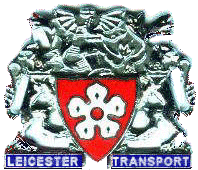 Early Bus Memories a separate page of text, a child's-eye view of memories of the Midland Red and LCT buses in the 50s and then on to memories of the Corporation Driving & Conducting School at Abbey Park Road in 1968. 
Conducting
-
how
it
was
done
Another separate page solely on conducting a bus, more exactly, how it was done on LCT in the late-60s, early-70s, and in particular by me, and my memories of it. Duties, shifts, ticket machines, athletic passengers and much more. Be warned - it is a long treatise. Humberstone
Gate
-
end
days,
1968
Another
separate
page
of
reminisces
regarding
the
old Humbertone Gate transport offices, including the canteen and Bread Street old tram depot at the back. MORE LEICESTER CITY TRANSPORT BUS LINKS More LCT vehicles on Flickr.com A most excellent Fleet List of all LCT vehicles, and Trams, dating back to when Adam was a lad. Provided by Peter Gould on his own website. LCT FLEET LIST
a must visit site is the superb : LEICESTER TRANSPORT HERITAGE TRUST 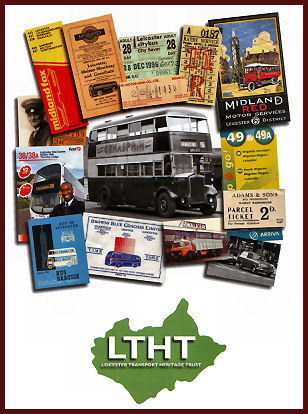 promoting all forms of road transport in Leicestershire LCT & Midland Red & private coaching & haulage & allsorts! And they also now have a simply brilliant and very professional website: LEICESTER TRANSPORT HERITAGE TRUST see the digital animation of the Stoneygate District Tram Depot and the plans for it to be a museum for the trust. Rob and Val's Home Page
Rob and Val's Home Page |












